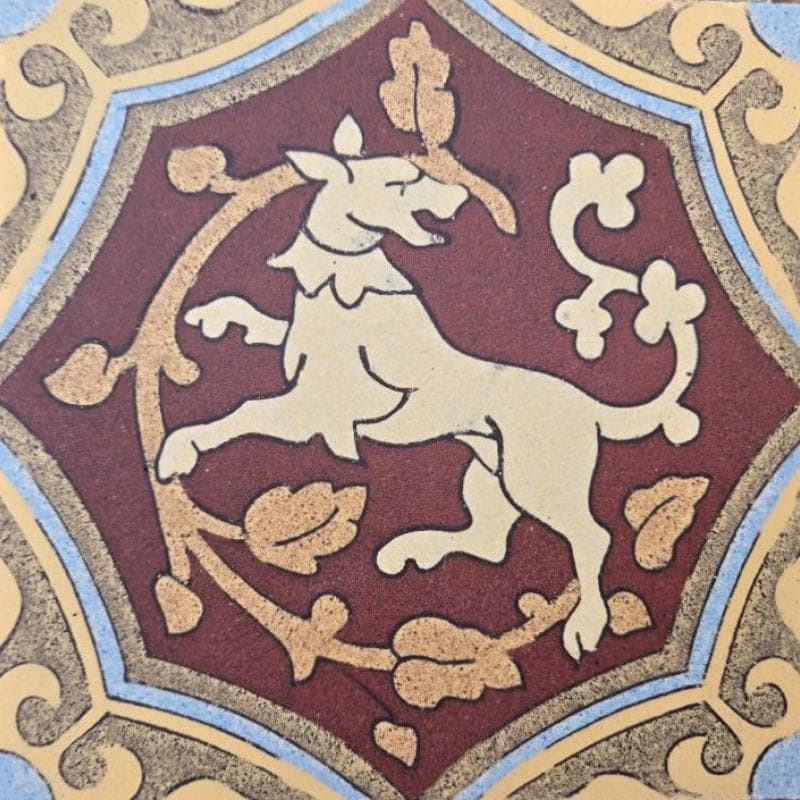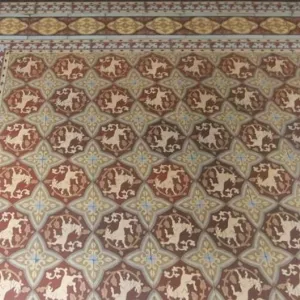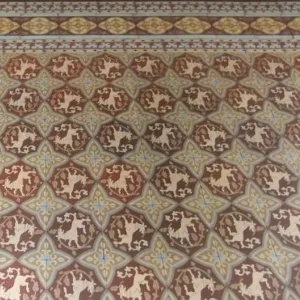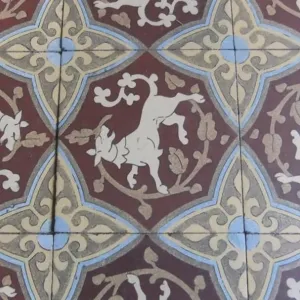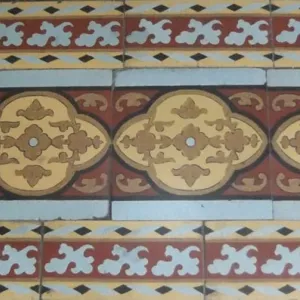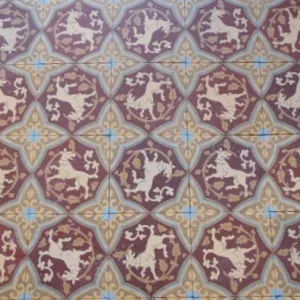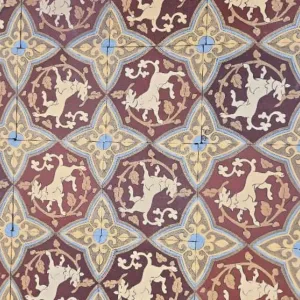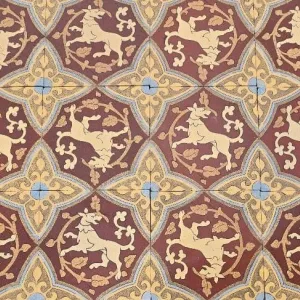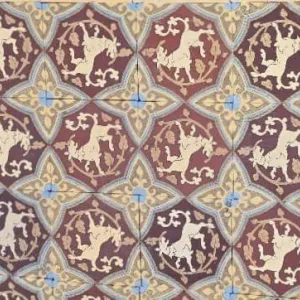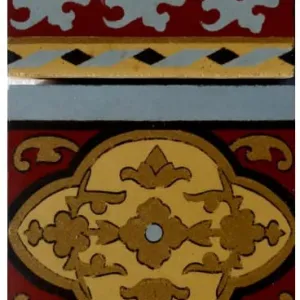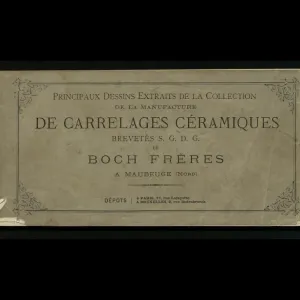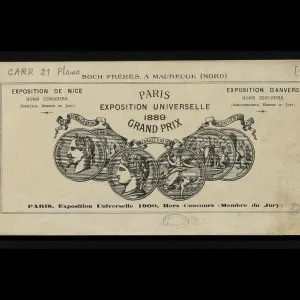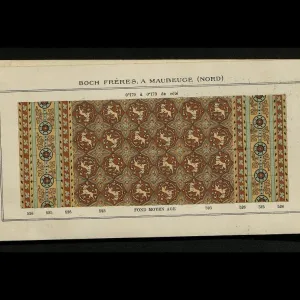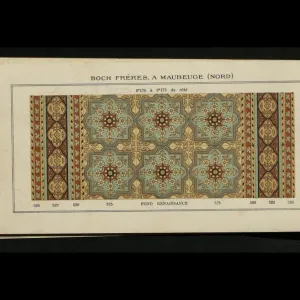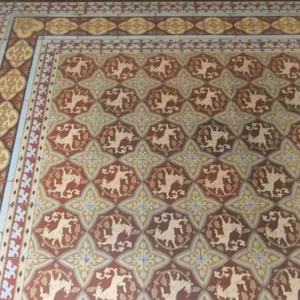A fine and rare French ceramic in a Gothic Revival theme - 1900
A masterwork of French decorative arts, this antique ceramic floor—painstakingly crafted by the esteemed Carrelages Céramiques Boch Frères of Maubeuge in 1900—is a remarkable relic of the Belle Époque. An extraordinary find, it represents a creative statement from an era when design, artistry, and durability were inseparable ideals.
Each tile measures c.6.8 inches sq, 1/2 thick and weighs c.50 ozs. Totalling 136 square feet, the floor is a tactile testament to the material integrity and technical prowess of the Boch Frères atelier.
The design, identified in the original 1900 Boch catalogue as “Moyen Âge”, channels the romantic Gothic Revivalism then in vogue, infused with a Moorish influence in its large border tiles. The central motif—a hunting hound in exquisite detail—is sculptural in its precision. The quality is such that the mold itself required to fabricate sucg a tile rises to the level of fine art itself; each tile’s surface bears the quiet strength of handcrafted work destined to survive generations.
These tiles have been sensitively restored and arrive ready to relay. A few retain minor, easily grouted edge nibbles or small chips—a silent reminder of their age and authenticity. Their colors remain crisp, as the photographs testify.
Documented, complete, and of rare artistic quality, this floor is far more than architectural salvage—it is an heirloom installation, a cultural artifact, and a triumph of early 20th-century ceramic craft.
Inventory Overview:
- Field Tiles: 297 tiles (approx. 93 sq ft)
- Large Border Tiles: 69 tiles plus 4 corner tiles (approx. 41 linear ft)
- Half-Size Border Tiles: 131 tiles plus 7* corner tiles (approx. 38 linear ft when laid in duplicate)
- Total Surface Coverage: 136 square feet
*one border corner will require mite cutting.
Note:-
Our antique tiles were originally handmade in single or two tile molds. Pre-computer fabrication these molds were machined by hand & the colour slips to create the tile were mixed by measure and eye. When firing the tiles, the kiln temperatures of c.1,100F degrees could also be variable. The result of this production process is that tiles made during this period of non-automation often display subtle size & thickness variations and there can be tonal variations in colors, all of which add to their charm and uniqueness. When photographing a floor, we always take a random section so that it is representative of the whole in tones and patina.
A rigorous quality control during the restoration process will include in the sale any tiles with groutable small chips and edge nibbles, expected of tiles more than 100 years old, but include for free any with larger defaults as rejects, which the tiler can then use for offcuts.
Can we help?
If you can provide a technical drawing, or a simple sketch with key dimensions, we are happy to assist in evaluating and recommending the best layout of the floor in your area of choice. Click here for more details
